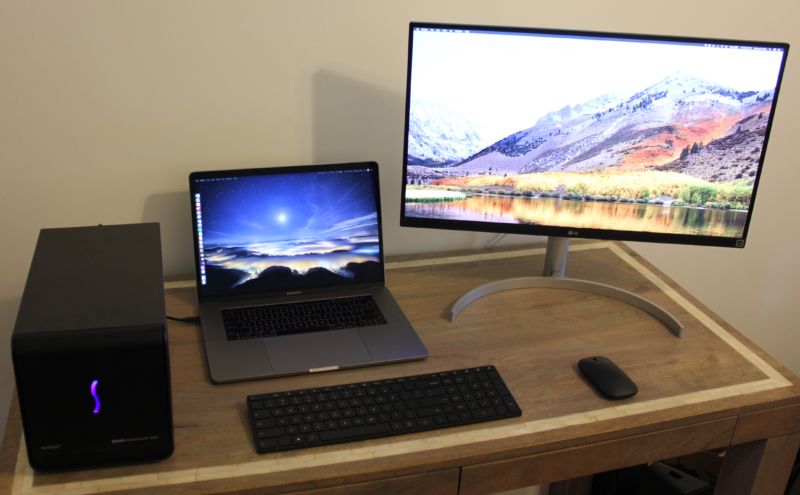

This site for more advice as the method may change over time and with subsequent updates to macOS. Now execute the following commands in Terminal:.Once you are logged in, plug in the eGPU.Boot from the external USB drive (hold down the Option/Alt key when you start up your Mac and select EFI Boot).You will need to format the USB stick first. Copy the EFI folder onto a FAT32 formatted USB stick.Get the automate-eGPU EFI v1.0.5 package.Before you start make sure the eGPU is disconnected.Rather than installing a patch, running a script, and altering the OS, you can now just download an automate-eGPU EFI zip file, copy it to a USB thumb drive and boot from it. However, you no longer need to go to these lengths. Just be aware that there is a possibility that you could damage your Mac, requiring you to re-install MacOS from scratch and losing all your files in the process – so make sure you back-up any important data you have on the device before proceeding. That said, we did find it necessary to disable system integrity protection and run a script to alter macOS. Installing the patch requires Admin privileges but is fairly straightforward and doesn’t require too much tech knowledge.
External gpu enclosure how does it work install#
When we first set up our Mac to work with an eGPU it was necessary to download and install a patch. So don’t move to the next step before backing up. As you will see from the next step, if everything goes wrong you may need to reinstall MacOS, losing all your data in the process.
External gpu enclosure how does it work how to#
Here’s how to use a Blackmagic eGPU with an older Mac:īefore you begin we recommend that you back up your Mac. We didn’t use an external display in our test, as we’re more interested in video and photography editing app performance. With Mojave running, you also no longer require to have an external display connected for it to work – unless you want to of course.
/cdn.vox-cdn.com/uploads/chorus_image/image/61141355/IMG_4426.1419964365.0.jpg)
You can use High Sierra as well, but the latest OS offers a simpler way to choose which apps use the external eGPU hardware when it is connected. You also need to be running the latest macOS, which at the time of writing is MacOS Mojave 10.14.5. You’ll also need a separate Thunderbolt 2 to 2 cable in addition, but it’s likely you already have one if you have previously plugged anything into your Thunderbolt port. There are some third party adapters, but we would recommend sticking to Apple’s own one which we know works – and should continue to work after any software updates (£49/$49,īuy it here). If like us, you want to use an eGPU with an older MacBook, with a Thunderbolt 2 or even version 1 interface, the first thing you will require is a USB-C to Thunderbolt adaptor. Before you start, make sure you buy the correct hardware and that you have a compatible Mac.


 0 kommentar(er)
0 kommentar(er)
